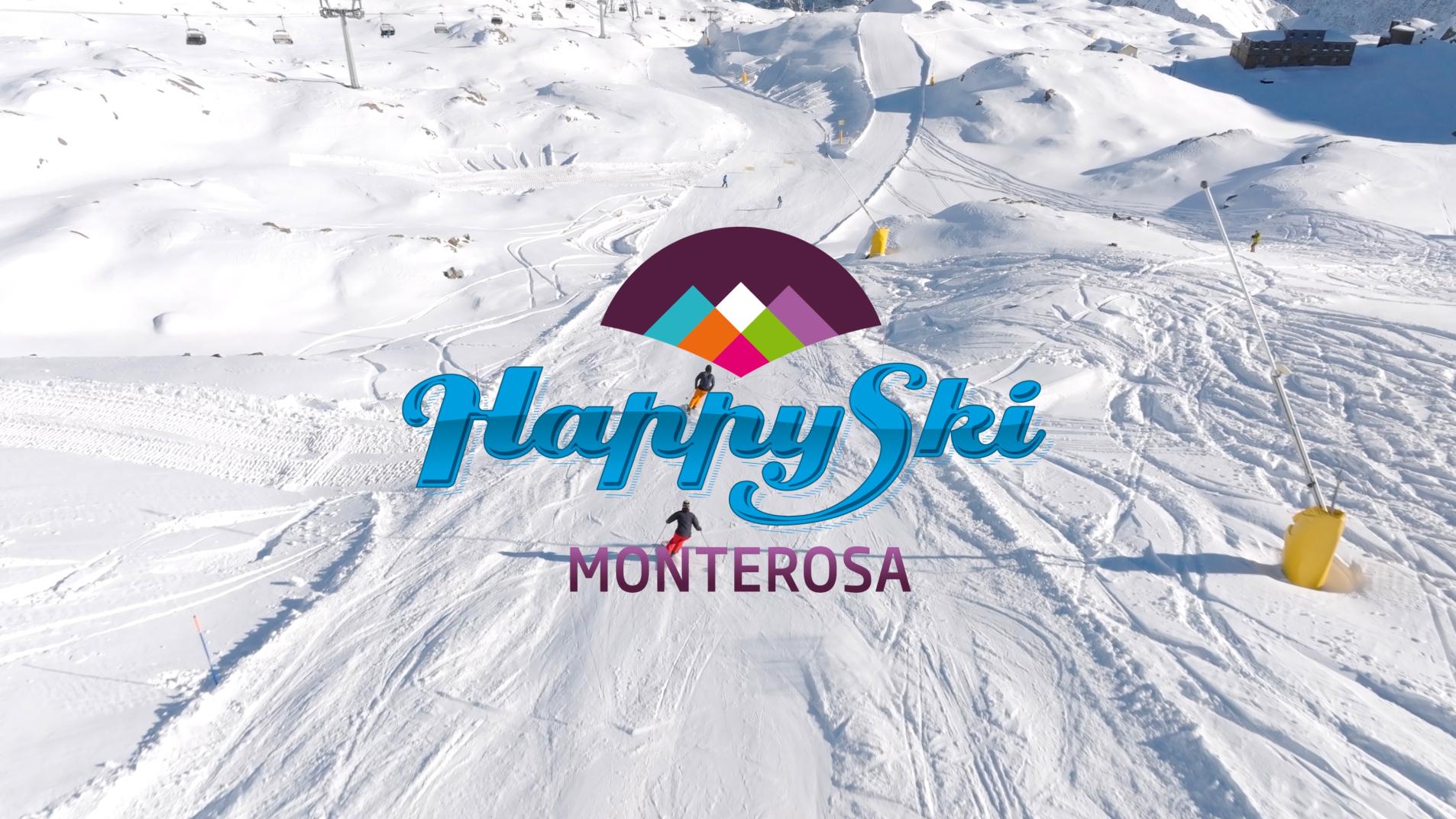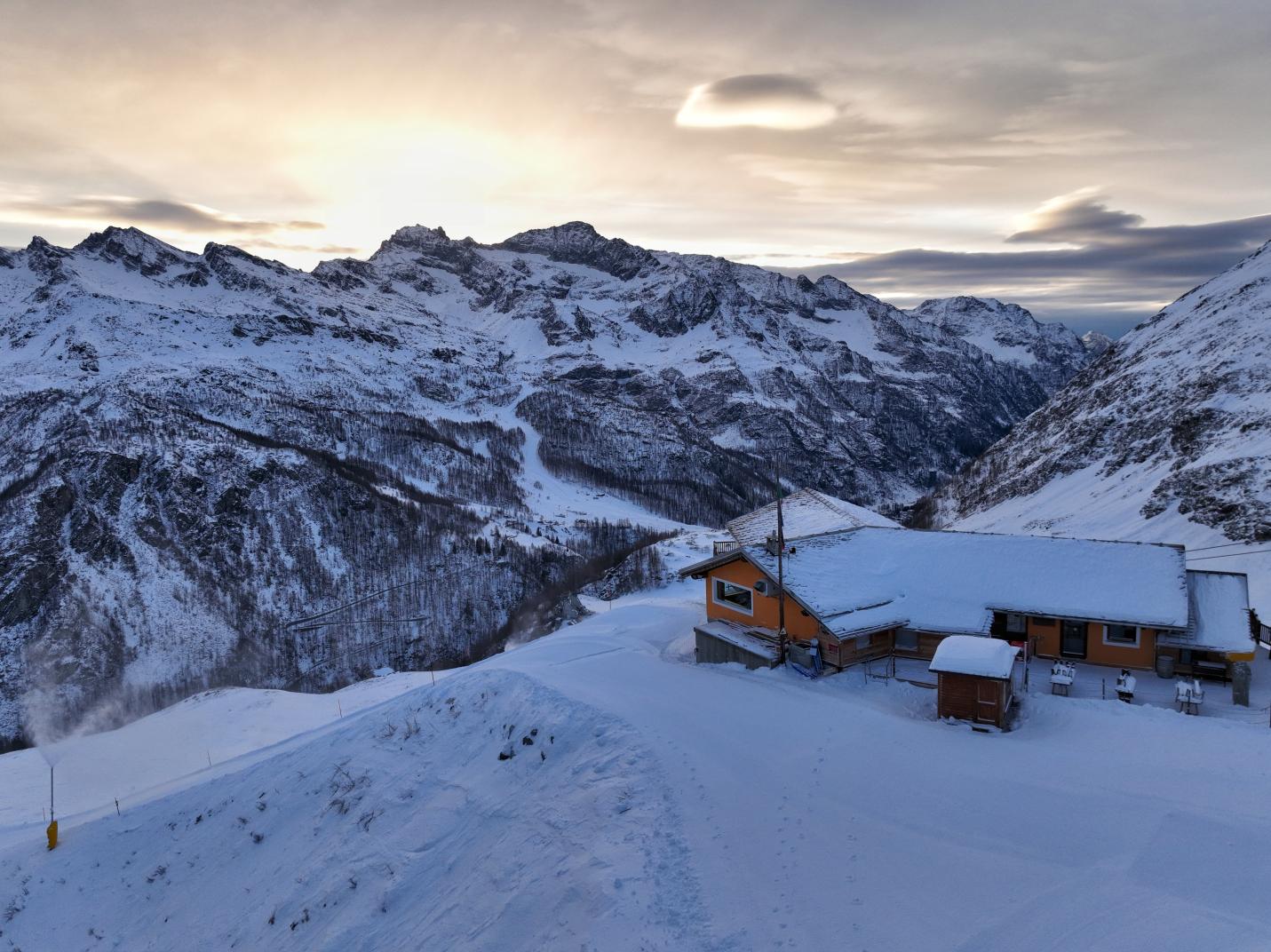The original embryo of the current plant engineering configuration of the upper Lys Valley nestles in the Bedemie basin and is called the "Punta Jolanda chairlift."
Its gestation is particular in that after about a five-year period during which local initiatives found no outlets, decisive will be the interest of engineer Eugenio Corsico Piccolino, who, by raising funds among the footwear industrialists of Vigevano, his native land, succeeds with the Funivie del Monterosa company in building a 250-person/hour single-seater chairlift. It is December 1957. One has to wait about 10 years for another important step: the Orsia-Bedemie-Gabiet gondola. This time capital comes from Busto Arsizio, through the hands of engineer Caccia and the I.S.A.G. company. It is no longer only the Bedemie basin (where in the meantime ski lifts have been built: Morgenrot and Bedemie) that is exploited, but with this challenging facility the Gabiet area and the directrix towards Valsesia are opened up.
Shortly afterwards, at Gabiet, the I.S.A.G. company built several ski lifts to allow the exploitation of the entire basin: Gabiet, Fontanasella, Castor and Pollux.
Still about 10 years later, towards the end of the 1970s, the Funivie del Monte Rosa company continued the exploitation of the Bedemie area by building the Ecko Gaveno,Derromatto and Seehorn ski lifts, while the I.S.A.G. company in 1980 made a further leap forward with the chairlift known as the Col d'Olen, which continued the line of the Gabiet gondola to the hill of the same name: Valsesia was getting closer and closer.The horizon that opens beyond Col d'Olen is very interesting: Valsesia is, from a plant engineering point of view, absolutely in the vanguard: the first plant in Alagna dates back to 1950: the famous Belvedere gondola.Already in the early 1960s, however, engineer Giorgio Rolandi of Milan designed and built a bold and grandiose work: the Alagna-Zaroltu-Bocchetta delle Pisse-Punta Indren cableway line: the first two sections saw the light of day in 1964; in 1965, after 6 years of work, the last section was completed and it was possible to reach the 3260 meters of Punta Indren on skis.At the beginning of the 1980s then, the Gressoney-Valsesia ski connection is possible but certainly reserved for experienced skiers who know how to deal with the off-piste sections from Olen to Zaroltu and from Indren to Gabiet.
Shifting our attention to the other side of the valley, we discover that engineer Luigi Beck Peccoz, who so many years earlier had kicked off the valley's plant engineering experience, was planning to give ski development to the Sant'Anna-Bettaforca area as well, and so it was that, in November 1976, the Stafal-Sitten and Sitten-Bettaforca chairlifts saw the light of day; the latter was soon completed by the Sant'Anna, Punta Sitten and Bettolina ski lifts.
In Val d'Ayas, as in Gressoney Valley, the first plant development had occurred in areas not directly involved in the interval connection: for Gressoney we mentioned the development in Bedemie, for Ayas it was the Crest basin.
After the first experiences with isolated ski lifts in the valley bottom, in 1959 the Champoluc-Crest twin-cable gondola and the Cre Forné and Fontaney ski lifts were built for the ski exploitation of Crest.
In 1968 the Crest-Ostafa chairlift was the first two-seater chairlift in Italy with the "extraordinary" capacity of 720 persons/hour, and in 1972 with the Sarezza ski lift the culminating point of the area was reached, giving completion to the Crest ski area. The Ayas - Gressoney connection route, on the other hand, still had to wait and would only materialize starting in 1979 with the Frachey-Alpe Ciarcerio chairlift and the Mandria Ie II ski lifts. The following year was the year of the Bettaforca ski lift, and the handshake at Colle Bettaforca sanctioned the plant and ski union between the two Valle d'Aosta valleys. This union will become a commercial union in 1981 with the birth of Monterosa ski, a brand that contains the different souls and companies that make up the famous carousel: Funivie di Champoluc in Val d'Ayas, Monrosa in Valsesia, and Gressoney Servizi (which took over from the 3 companies Gressonare Funivie del Monte Rosa, I.S.A.G. and Ghiacciai del Lys) in Gressoney Valley.With this brand, one of the largest skiable areas in Italy is established where the skier can "travel" through three valleys and two regions, changing panorama and scenery several times.
It is 1991, the Stafal-Gabiet and Gabiet-Passo dei Salati lifts are built via two gondolas with 6 and 12 seats respectively: in one fell swoop the two sides of the valley floor are connected and the Aosta Valley-Piedmont watershed is effectively reached.
The Orsia-Bedemie-Gabiet line gives way to the new connecting line that passes through Stafal. These are years of intense work where the Aosta Valley Region invests considerably in the development of ropeways as a driver of commercial activities and the tourism market; the few hints that follow give an idea of the magnitude of the effort:
- 1990: Sarezza chairlift, Crest-Ostafa II chairlift and Fontaney chairlift in Val d'Ayas;
- 1991: Stafal-Gabiet gondola, Gabiet-Passo dei Salati gondola, Orsia-Bedemie chairlift, and Punta Jolanda chairlift rebuild in Gressoney Valley;
- 1992: Alpe Mandria chairlift in Val d'Ayas;
- 1993: Bettaforca chairlift in Val d'Ayas and S.Anna Colle Betta chairlift in Gressoney Valley;
- 1996: Stafal-S.Anna cable car in Val di Gressoney.
Also in 1996, Champoluc Funivie and Gressoney Servizi set up Monterosa, a predominantly public capital company administered by accountant Fournier.
The development of the lifts goes hand in hand with that of the downhill slopes: the territory in those years is modified in a major way with the awareness that the natural environment in which those lifts and slopes were inserted was the real wealth of the area: remodeling is carried out with extreme care, studies are born for the selection of the most suitable seeds for greening, the effects of compacted snow on the flora are studied in depth. In Valsesia, unfortunately, there is no opportunity to replicate this considerable impetus, and the plant situation remains as outlined by engineer Rolandi 35 years earlier. The turning point came in 2000 when a protocol of intent was signed between the Autonomous Region of Valle d'Aosta and the Region of Piedmont to build an interval cableway link across the Passo dei Salati. This document was the basis for a decade of cableway construction:
- in 2000, the Alagna-Pianalunga gondola and Bocchetta chairlift, which replaced the Alagna-Zaroltu-Bocchetta route
- in 2004 the Pianalunga-Cimalena-Passo dei Salati funifor
- in 2009 the Passo dei Salati-Indren funifor, which returns to provide access to Indren that was lost after the closure of the third section of the Alagna cable cars in 2007. With these lifts and the construction of the Olen slope in the valley of the same name, the plant and ski connection between the three valleys is consolidated and affordable for everyone, while keeping the Indren area and its wonderful off-piste terrain for a niche audience. Twenty years after that resounding development, today many lifts need to be renewed: in fact, in 2009 the Frachey-Alpe Ciarcerio chairlift was replaced with a funicular plant that is singular and very rare in the Italian panorama for ski activity, and in 2011 the Stafal-Gabiet gondola was replaced and the Gabiet-Passo dei Salati gondola was renewed. These were renovations dictated by regulatory requirements or obsolescence of the facilities, but the "philosophy" of the ski connection has remained the one outlined by the forerunners since the 1970s. Is the Walser high route completed? Perhaps not yet: those ancient travelers, farmers and traders arrived from Valais via the Teodulo...









